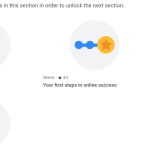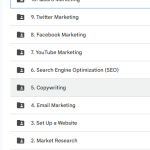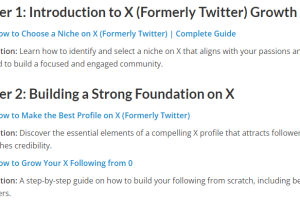Creating high-engagement tweets on X (formerly Twitter) is essential for building a strong audience and establishing a significant online presence. This guide will provide you with detailed, SEO-optimized steps and tips to craft compelling tweets that resonate with your audience and boost your engagement.
Step 1: Understand Your Audience
Understanding your audience is the foundation of creating engaging tweets. Knowing what your followers are interested in helps you tailor your content to their preferences, encouraging more interaction and engagement.
Tips for Understanding Your Audience:
- Analyze Your Followers: Use tools like X Analytics to gather data on your audience’s demographics, interests, and online behavior.
- Monitor Engagement: Pay attention to which tweets get the most likes, retweets, and comments to understand what resonates with your audience.
- Conduct Surveys: Use X polls or external survey tools to ask your audience directly about their interests and preferences.
- Engage in Conversations: Interact with your followers regularly to build relationships and gain insights into their needs.
Tools for Understanding Your Audience:
- X Analytics – Provides detailed insights into your audience’s demographics and engagement metrics.
- Sprout Social – Analyzes audience data and engagement patterns.
- Hootsuite Insights – Offers comprehensive analytics on your followers and their behavior.
- Google Analytics – Tracks traffic from X and provides insights into your audience.
- Buffer Analyze – Measures audience engagement and growth.
- Brandwatch – Monitors audience sentiment and trends.
- TweetReach – Analyzes the reach and impact of your tweets.
- Followerwonk – Examines your followers’ profiles and interests.
- Audiense – Segments and analyzes your audience to tailor your content.
- Social Mention – Tracks mentions and engagement from your audience.
Step 2: Create Visually Appealing Content
Visual content is crucial on X, as it grabs attention and enhances engagement. Incorporating photos, videos, and GIFs can make your tweets more attractive and shareable.
Tips for Creating Visually Appealing Content:
- Use High-Quality Images: Ensure your photos are clear, relevant, and visually appealing.
- Incorporate Videos: Share short, engaging videos to capture attention.
- Create GIFs: Use GIFs to add humor and personality to your tweets.
- Design Infographics: Provide valuable information in a visually engaging format.
- Utilize X Media Studio: Organize and manage your visual content efficiently.
Tools for Creating Visually Appealing Content:
- Canva – Design graphics and infographics easily.
- Adobe Spark – Create stunning visual content.
- Piktochart – Design infographics and visual content.
- Lumen5 – Turn text content into engaging videos.
- GIPHY – Find and create GIFs.
- Snappa – Create social media graphics quickly.
- Pablo by Buffer – Design engaging images for social media.
- Animoto – Create professional-quality videos.
- InVideo – Turn your content into captivating videos.
- Crello – Design visual content with ease.
Step 3: Use Hashtags Effectively
Hashtags are essential for increasing the discoverability of your tweets. Using relevant and popular hashtags helps you reach new audiences and boost engagement.
Tips for Using Hashtags:
- Research Trending Hashtags: Use tools like Hashtagify to find trending and relevant hashtags.
- Limit the Number: Use 1-3 hashtags per tweet to avoid clutter and maintain readability.
- Create Branded Hashtags: Develop unique hashtags for your brand to encourage user-generated content.
- Use Hashtags in Context: Ensure your hashtags are relevant to your tweet’s content.
- Monitor Hashtag Performance: Track the performance of your hashtags to see which ones drive the most engagement.
Tools for Using Hashtags:
- Hashtagify – Discover trending and relevant hashtags.
- RiteTag – Get real-time hashtag suggestions.
- Tagboard – Track and analyze hashtag performance.
- Trendsmap – See where hashtags are trending globally.
- TweetDeck – Monitor hashtag usage and performance.
- Twitonomy – Analyze hashtag engagement metrics.
- Keyhole – Track hashtag performance and trends.
- Brand24 – Monitor hashtags and mentions.
- Socialert – Analyze hashtag campaigns.
- Talkwalker – Monitor hashtag trends and engagement.
Step 4: Engage with Twitter Polls and Questions
Twitter polls and questions are excellent for fostering engagement and interaction. They encourage your audience to participate and share their opinions, making your tweets more interactive.
Tips for Using Polls and Questions:
- Ask Relevant Questions: Pose questions that are relevant to your niche and interesting to your audience.
- Use Polls for Feedback: Conduct polls to gather insights and feedback from your followers.
- Spark Conversations: Ask open-ended questions to encourage discussions.
- Promote Polls: Share your polls across different social media platforms to increase participation.
- Respond to Answers: Engage with the responses to your questions and polls to show appreciation and build rapport.
Tools for Engaging with Polls and Questions:
- X Polls – Create and manage polls directly on X.
- SurveyMonkey – Conduct detailed surveys and gather feedback.
- Typeform – Create interactive and engaging surveys.
- Google Forms – Design and distribute surveys easily.
- Poll Everywhere – Engage your audience with live polls.
- Sli.do – Run live polls and Q&A sessions.
- Mentimeter – Create interactive presentations with polls.
- Crowdsignal – Conduct polls and surveys.
- JotForm – Design and share custom polls and surveys.
- Formstack – Create online polls and forms.
Step 5: Use Twitter Cards
Twitter cards allow you to add rich media to your tweets, making them more engaging and encouraging clicks and conversions.
Tips for Using Twitter Cards:
- Promote Content: Use summary cards to promote your blog posts, articles, or news updates.
- Showcase Products: Use product cards to display your products with images, descriptions, and pricing.
- Highlight Apps: Use app cards to promote your mobile apps with direct download links.
- Embed Videos: Use player cards to embed videos directly in your tweets.
- Optimize for Clicks: Ensure your cards have compelling headlines and calls-to-action.
Tools for Creating Twitter Cards:
- Twitter Card Validator – Ensure your cards are set up correctly.
- Yoast SEO – Optimize your content for Twitter cards.
- Canva – Design visuals for your Twitter cards.
- Adobe Spark – Create engaging media for your cards.
- Piktochart – Design infographics for summary cards.
- Snappa – Create visuals for product cards.
- Animoto – Produce videos for player cards.
- Lumen5 – Convert content into video for player cards.
- InVideo – Design engaging videos for player cards.
- Hootsuite – Schedule and track the performance of your Twitter cards.
Step 6: Use Call-to-Actions (CTAs)
CTAs are essential for guiding your audience towards specific actions, such as visiting your website, signing up for a newsletter, or following your account.
Tips for Using CTAs:
- Be Clear and Direct: Use straightforward language to tell your audience what action to take.
- Create Urgency: Use time-sensitive language to encourage immediate action.
- Offer Value: Highlight the benefits of taking the action you’re promoting.
- Use Visual Cues: Incorporate arrows, buttons, or other visual elements to draw attention to your CTA.
- Test Different CTAs: Experiment with different wording and placement to see what works best.
Tools for Optimizing CTAs:
- HubSpot – Design and analyze effective CTAs.
- Canva – Create visually appealing CTA buttons.
- Leadpages – Build high-converting landing pages with CTAs.
- Unbounce – Optimize CTAs on your landing pages.
- OptinMonster – Design and track CTAs for lead generation.
- ClickFunnels – Create sales funnels with compelling CTAs.
- Sumo – Add CTA pop-ups to your website.
- ConvertKit – Include CTAs in your email campaigns.
- Mailchimp – Design and test CTAs in your emails.
- Thrive Leads – Build and optimize CTAs for lead generation.
Step 7: Be Conversational
Using a conversational tone in your tweets makes them more engaging and relatable. It helps you connect with your audience on a personal level, fostering loyalty and interaction.
Tips for Being Conversational:
- Write Like You Speak: Use natural, everyday language in your tweets.
- Ask Questions: Encourage responses by asking your audience questions.
- Share Opinions: Offer your thoughts on industry news or trends to spark discussions.
- Use Emojis: Add emojis to convey emotions and make your tweets more expressive.
- Respond Promptly: Engage with replies and comments to show that you value your followers’ input.
Tools for Enhancing Conversational Engagement:
- TweetDeck – Monitor and respond to interactions in real-time.
- Hootsuite – Manage and engage with conversations across multiple accounts.
- Sprout Social – Track and respond to comments and mentions.
- Buffer Reply – Handle customer service and engagement from one inbox.
- Zendesk – Manage customer support and engagement on X.
- SocialBee – Schedule and categorize conversational tweets.
- AgoraPulse – Monitor social media conversations and engage effectively.
- TweetChat – Participate in and host Twitter chats.
- Tweriod – Analyze the best times to tweet for maximum engagement.
- Followerwonk – Identify and engage with your most influential followers.
Conclusion
Creating high-engagement tweets on X (formerly Twitter) involves understanding your audience, crafting visually appealing content, using hashtags and CTAs effectively, engaging with polls and questions, and maintaining a conversational tone. By leveraging these strategies and tools, you can build a strong and engaged following on X, ultimately driving growth and success on the platform.







[…] Title: Ultimate Guide to Creating High-Engagement Tweets on X (Formerly Twitter) […]